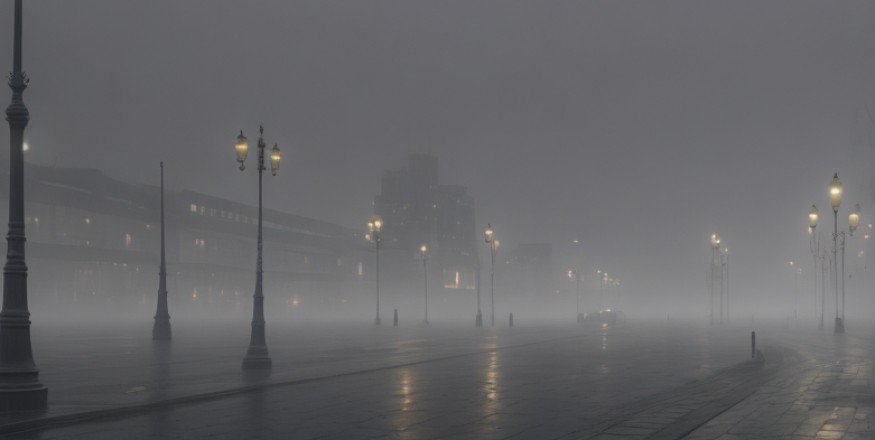In the eerie gloom of a dimly lit hallway, the air was thick with moisture, each drop resonating like a melancholic symphony against the ground. The darkness was made more palpable by the incessant dripping from the ceiling, the walls seemingly weeping in unison. The once inviting corridor had transformed into a wet, eerie passage, a silent testament to the enigmatic events that had unfolded on what started as a seemingly ordinary day.
It began with the sky, an angry canvas of clouds churning ominously, foretelling a tempestuous upheaval. As the clock's hands ticked forward, the heavens ruptured, releasing torrents of an unfamiliar liquid that cascaded down like nature's protest. At first, the world's denizens gazed upwards in bemusement, attributing the strange occurrence to mere rain – an everyday phenomenon. But as hours melted into days, and days into weeks, the relentless downpour showed no signs of abating.
News channels around the globe raced to cover the baffling phenomenon that had united humanity in both curiosity and trepidation. Crops withered under the ceaseless assault, rivers swelled beyond their banks, and the once-verdant Earth seemed to groan under the weight of the relentless onslaught. What had begun as curiosity soon transformed into a creeping unease that settled deep within people's hearts.
As the world's experts – scientists, meteorologists, astrologers, and even those who claimed a connection to the metaphysical – converged to decipher the riddle, the skies offered no respite. Solutions were proposed and discarded, theories bandied about, yet nothing seemed to appease the furious deluge from above. The sky was an unyielding adversary, as if mocking the collective knowledge and ingenuity of humankind.
Fingers pointed in every direction – was it an anomaly of nature, an act of cosmic retribution, or a portent of the apocalypse? The media churned out sensational stories, evoking fear and fascination in equal measure, and governments struggled to manage the growing chaos. Citizens began to hoard resources, uncertain of a future in which the rain seemed destined to be an eternal companion.
Amid the chaos, tales emerged of isolated communities where the once-celebrated rain had become a harbinger of despair. People no longer danced in the rain, children didn't laugh as they jumped in puddles – the very essence of life's simplest joys had been quashed. The world's art and literature, once celebrated for their romantic depictions of rainfall, now echoed the somber mood that had gripped the globe.
In the realm of science, laboratories buzzed with activity. Instruments were calibrated, theories dissected, and experiments executed in a desperate bid to decipher the origins of the aqueous deluge. Geoengineers conceptualized audacious projects to divert or mitigate the rain, while climate modelers attempted to trace back the anomaly's roots to human interference with the planet's delicate balance.
Concurrently, the spiritual and the mystical were not to be outdone. Temples, churches, and sacred sites saw an influx of believers seeking solace, guidance, and meaning amidst the relentless rainfall. Prophets emerged, each interpreting the phenomenon through the lens of their faith, some predicting cataclysmic events, while others saw it as a chance for humanity to mend its ways.
Months turned to years, and yet the rain persisted. Humanity's resilience was tested to its limits. Communities banded together to construct makeshift barriers, to devise creative ways to harvest and repurpose the water, and to support one another through the growing uncertainty. It was in the darkest hours that the light of human spirit shone brightest.
As the world wrestled with the unending deluge, a subtle shift began to permeate the collective consciousness. People started looking beyond their differences, beyond borders and creeds, uniting in the face of a shared adversity. The rain, once seen as an enemy, was gradually reframed as a unifying force, a challenge that transcended individual lives.
Then, as abruptly as it had begun, the rain ceased. The skies, once oppressive with their ceaseless weeping, cleared, revealing a world forever transformed. The scars of the relentless downpour were evident – altered landscapes, broken infrastructure, and the indelible mark on human history.
In the wake of the deluge's end, humanity found itself with a newfound appreciation for the delicate equilibrium of the natural world. The rain, once perceived as a relentless foe, had brought both devastation and resilience, serving as a stark reminder of humanity's connection to the planet it called home. The world emerged humbled, its spirit tempered by the unyielding trial.
The enigmatic rainfall had taught a profound lesson – that the bonds that tied the world's inhabitants were stronger than the trials they faced. As societies embarked on the arduous journey of rebuilding, the memory of the relentless rain served as a catalyst for a new era of cooperation, understanding, and stewardship of the planet.
And so, the world moved forward, forever marked by the memory of the rain that had united humanity in its vulnerability, reshaping its very essence for generations to come.
ns18.118.210.110da2





















